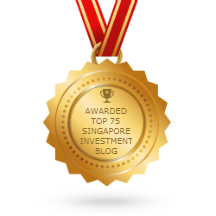The UIS Story - Closed-End Fund vs Open-End Fund
The EGM held by UIS yesterday had set me thinking about Closed-End Fund vs Open-End Fund. I mean, most investors are familar with open-end funds as there are many out there like most unit trusts. Basically the difference between the two is that closed-ended funds are not available for creation/cancellation of units/shares after IPO. Effectively, the fund is "closed" after listing and shareholders will have to sell their shares in the market after listing if they wish to liquidate their holdings. They cannot go to the fund manager and redeem their units. Similarly, the fund manager of a closed-ended fund is not likely to issue new units for subscription for interested unit holders after IPO.
So what is the advantage of a closed-ended fund like UIS over open-ended fund ones like most unit trusts/ETFs?
1. Fund manager do not have to worry about subscription and redemption of units/shares. This basically saves them the headache of managing fund inflows and outflows due to investors' actions. They can avoid selling assets during market downturn in order to meet redemptions from panic sellers. They can also avoid huge cash inflows during market bull runs and having being "forced" to invest in a heated market or hold too much cash due to no investment ideas.
2. Fund manager will have to increase the asset in the fund via his stock picking and investment skills and not via attracting new investors into the fund. The skill of the fund manager thus become an important factor in growing the fund, rather than by cash inflow from new investors.
Of course, the main problem of closed-end fund is that it seldom trade near its NAV. It usually trades at a premium or discount from its NAV, and in UIS case a discount of around 15% to 25% most of the time. Another problem is its liquidity might be an issue for someone who wants to buy/sell quite a substantial amount of its shares.
All in, it is hard to say which structure is better. If I am looking for a fund to invest, I will have to see its cost structure and how much value the fund manager is giving me. Buying something at a discount from NAV might be a good deal for me and not a good one for the seller. However, if the fund manager is a good one, its NAV and share price should increase progressively throughout the years even if the share price is consistently trading at a discount.
As to how to narrow the discount to NAV for UIS, various suggestions had been tabled but in my own view, none is better than seeing an increasing NAV plus decent dividend payout throughout the holding period for a long term investor like me.
Labels: Others



3 Comments:
I notice that the discount for UIS has narrowed. At the trough of the market, the discount in percentage is greater. Maybe the market discounts the NAV in absolute terms (about 30cts) instead of percentage. Maybe both.
Mind if you share what had been proposed to improve the spread?
Happy new year to you!
Hi cif5000,
Some suggestions:
1. Close the fund, sell all the assets and realize cash to return to shareholders.
2. Do Share Buyback.
3. Convert from Close-Ended Fund to Open-Ended Fund.
Happy New Year to you too! May all your investments bear fruits in 2010. :)
Hi,
I think you made quite a few interesting points about Open funded funds. Unit trusts come along with various costs and some are more conspicuous than you think.
- Sales charge 3-5%
- Expense ratios 0.5%-2.0% pa
- Management costs 1% -2.0% pa
These costs in the long run will reduce returns. The unit trust will have to out perform the market by up to 4% pa to achieve the market return, which is usually not achieved.
Further more, I think open ended funds behave like a bunch of fat cows in a herd. The more unit holders buy into the fund, the fund manager usually buys the same securities already bought, this causes a large inflation of prices of the securities which can be dangerous when the bubble bursts. This is worsened by various fund managers buying into the same assets. This was one of the reasons why the dot com bubble in 1999 came about.
Management costs/expense ratios are usually much lower than in close ended funds like UIS and their strategy involves holding securities for investments(long term) and not trading. It chalks up less investment charges and also doesnt go around chasing securities expected to grow in price in the next 3 months only to sell them off for a quick profit.
Post a Comment
<< Home